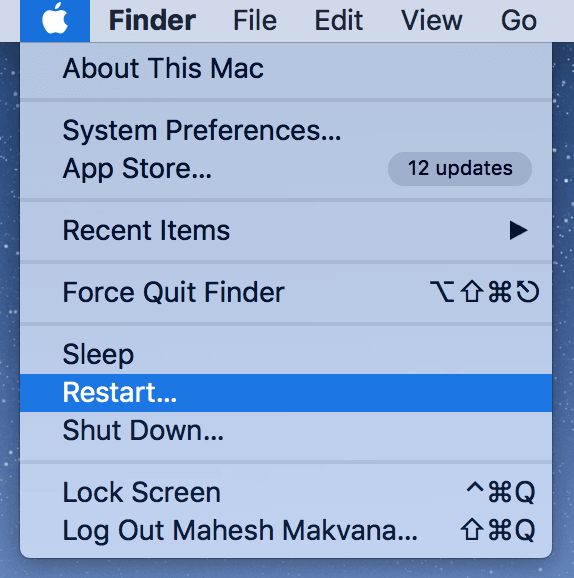

- #Mac empty trash command line 10.13 how to
- #Mac empty trash command line 10.13 mac os x
- #Mac empty trash command line 10.13 install
- #Mac empty trash command line 10.13 update
- #Mac empty trash command line 10.13 full
Highlight the needed folder version and click on Restore. Right-click the target folder and hit Restore previous version from the drop-down menu.

Otherwise, you can use the keyboard shortcut Command + Space.2) Type in Terminal.3) You should see the Terminal application under Top Hit at the top of your results. 1) If you have the Spotlight Search button in your menu bar, click it. Mac Trash won’t empty time machine backups and receive the message 'some items in the Trash cannot be deleted because of System Integrity Protection' sometimes, in this case, you will need to temporarily disable the System Integrity Protection. All you need to do to restore files from an emptied Recycle Bin in Windows 10 computer is to: Run File Explorer and go to the folder containing the file (s) deleted from Recycle Bin. One of the quickest and easiest ways to open Terminal on Mac is with Spotlight Search. Click Erase and OS X will format the drive. 5 Fix Mac Trash Won’t Empty Time Machine Backups.
#Mac empty trash command line 10.13 install
These will format the drive in OS X's HFS+ filetype so it will be compatible with Time Machine. Terminal Command Date Install 10.12.6 date command string, where date is in the mmddHHMMyy format for 10-22-2019 1223: so enter in Terminal: date 1022122319 Quit Terminal.

Please guide which format of external hard disk (fat32 or ntfs) is compatible with my mac. As the internal storage is not much, i am thinking if buying an external hard disk. I just bought a macbook pro (13.3 inches). Just because you don’t see the option to format your hard drive to FAT32 in Windows’ user interface doesn’t mean the ability is gone completely. Format An External Hard Drive To FAT32 Using Command Prompt.
#Mac empty trash command line 10.13 full
Hitting enter after typing the full command. Type the srm -v command in the terminal window then drag your file from the finder window to the terminal window to add the path. Open a Terminal window (Command + Space, type terminal) 3. Start by finding the file you want to delete in finder.
#Mac empty trash command line 10.13 how to
Don’t Format the Drive! (Yet) When you connect a Mac-formatted drive to Windows, you’ll be informed that “you need to format the disk in drive X: before you can use it.” Don’t click the “Format disk” button or Windows will erase the contents of the drive–click “Cancel”! For instance, some of the modern video doorbells you buy require your storage devices to be in the FAT32 format. How to Securely Remove a File from OS X El Capitan. Step 1: Connect the external hard drive to your Mac that you want to format. As we can format the drive from Disk utility, Therefore, we will do it with the disk utility option. It is also a good way to destroy you system because you screwed something up.How to Format External Hard Drive on a Mac? Now, I will show you how to format external hard drive on a Mac using the below steps. This is great for customizing your Mac and unveiling hidden features. If prompted, choose a user whose password you know and input their administrator password. Start from macOS Recovery: power on your Mac, then immediately press and hold Command and R until you see an Apple logo or another picture. It is designed for you to typing in specific commands that you would not be able to do otherwise. How to Factory Reset Mac Using Disk Utility.
#Mac empty trash command line 10.13 mac os x
#Mac empty trash command line 10.13 update
To update macOS from the command line, first launch Terminal, which can be found in the Applications/Utilities folder.

Commands that refer to filenames, as most do, assume that you’re talking about files in the. Delete those folders, empty your trash, reboot and you will be good to go Remember, without show hidden files enabled, you will not be able to see (and remove) the first one. If you’re working in Terminal on your Mac, you need to know the most important UNIX commands: those that work with directories, those that work with files, and miscellaneous but commonly used commands. I've got locked Trash files, but I don't know which they are. The first Terminal command to try makes the Trash files editable, hopefully freeing them up to be deleted. To list all mounted drives and their accompanying partitions from the Terminal on Mac OS X, you can use the diskutil command with the list flag.This approach will display all disks, drives, volumes, and containers on any drive connected to the Mac, including boot volumes, hidden volumes (like the Recovery partition), empty volumes, unformatted drives, and all other disks. Most of us have tried to empty our Trash, only to be brought up short by a file that’s locked or in use. Bootable USB codes - NumberDZ Catalina 10.15.x sudo /Applications. Codes will be updated in the future, if you are watching this video 5, 10, 20 years from now you will find the updated code here.


 0 kommentar(er)
0 kommentar(er)
